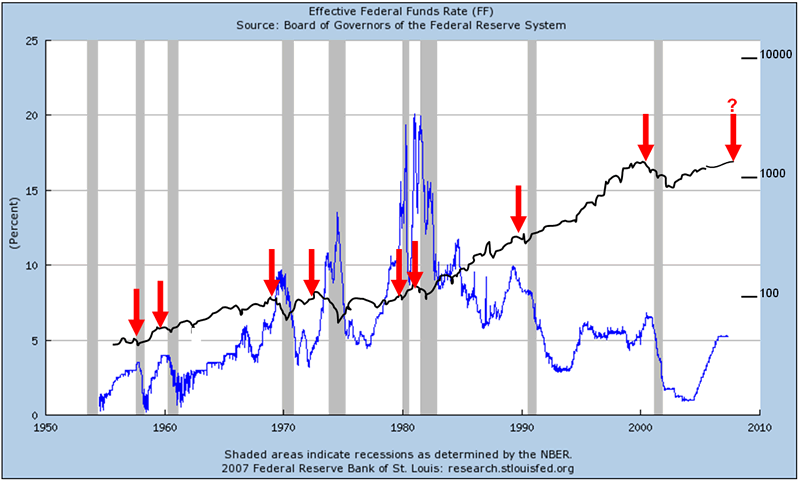THE MATRIX The 88,000 jobs added in April is the smallest increase since November 2004 and a factor in lowering year-to-date average monthly increase in jobs to 129,000 versus 2006´s 189,000. This untimely trend comes at a time when falling home prices prevent US households from cashing any more home equity via mortgage debt or reaching into their a negative savings (-0.7% so far in 2007) to keep spending. As a result, the average consumer is turning to his last available option: credit cards. This would explain why U.S. Consumer Credit increased $13.5 Bln (versus $4.5 Bln expected) in March and why MasterCard´s first-quarter profits surged 70% to a record $214.9 million following a 19% jump in transactions. However, since credit card debt carries much higher interest rates than mortgage debt and is not tax deductible, it is far more expensive to finance. So even as consumers “charged” their credit card for things that until recently they could pay for in cash, they bought less of them and so major retailers such as Target and Circuit City still got disappointing March sales. What this all means is that the US could be getting closer to recession as Consumer Spending which drives 70% of the US GDP may be approaching a “cliff” as consumer credit taps out and jobs trend down.
As for the frothiness of the current stock market, please take a look at the chart below and notice that over the last fifty years, the S&P 500 has reached its peak (red arrows) 1 to 12 months ahead (7 months average) of each economic-cycle peak (recessions are in grey). So the bullishness you are seeing is typical of the last stage of all bull markets. How long will this stage last, no one knows. For instance, today we may see the S&P 500 topple its year 2000 high of 1527, if the Fed changes its tightening bias to neutral, but if the Fed stays firm, this bull market’s days are probably over.
LOCALLY GROWN As pointed out by Gustavo García in the article below, by issuing $7.5 billion in PDVSA notes and loosing $7.5 Billion (Bs. 16 Trillion) in Central Bank Deposits, the administration only managed to exchange 28-day Bolivar obligations of the Central Bank for 10,20 and 30-year Dollar obligations of PDVSA. This means that May Monetary Mass (M3) of Bs. 117 Trillion is the same as January’s but Central Bank Reserves came down from $36.6 Billion to $24.6 Billion. Dividing 117 into 24.6 yields an implicit FX rate of Bs. 4.756/$. If you add the other Bs. 18 Trillion left in Central Bank Deposits (which would be drawn upon any new issues being placed), you obtain a truer portrait of how many Bolivars are really available per dollar: 5.487
An interesting item the administration announced last week is the country’s pullout from the IMF. Analysts throughout the world take it just as a threat. Only Venezuelans can understand the announcement is for real. We have learned, the hard way, that legal and economic considerations are secondary to the administration’s long-term interests. So, yes any of the Republic’s external debt trading below par will soon enjoy a free, permanent put at 100% and all that will be required to execute it is that 25% of the debt holders (in each note) vote in favor, once Venezuela draws out of the IMF.
PARALLEL UNIVERSE Given the failure of the new dollar issues to solve the excess-liquidity problem (explained above) and thus to lower the parallel rate, the administration seems to be embarking on a new tactic: Drawing most if not all of the public sector’s deposits from private banks whenever they become due. As everything else tried before, this initiative may work to lower the parallel rate only at the beginning. In a month or two, private banks will be compelled to increase their yield rates in order to attract whatever funds are left in the wake of the public sector pullout. Such a rate increase may start a negative dynamic in both the financial and the real sectors of the economy that will be hard to pull back from, once it begins and in the end the parallel rate will rebound to considerably higher grounds.


Leave a Reply